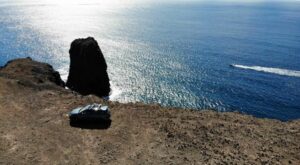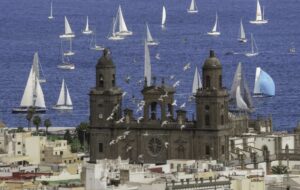ESSENTIAL NATURAL AREAS
The variety of natural places in Gran Canaria means that within a small area you will find geographical landmarks as varied as a large rock formation, dunes that resemble a desert, a crater and cliffs. Exploring the island is like taking an island geography and history lesson round every corner. Some of the must-visit places related to nature that you cannot miss in Gran Canaria include the following.
Roque Nublo, a place of worship
Roque Nublo is Gran Canaria’s most recognisable rock formation. Standing at a height of 80 metres and rising 1,813 metres above sea level, the rock was formed by one of the volcanic eruptions that forged the archipelago millions of years ago. The most unusual thing about Roque Nublo is its link to a sacred place of worship for ancient indigenous people. The rock is one of the island’s must-visit places.
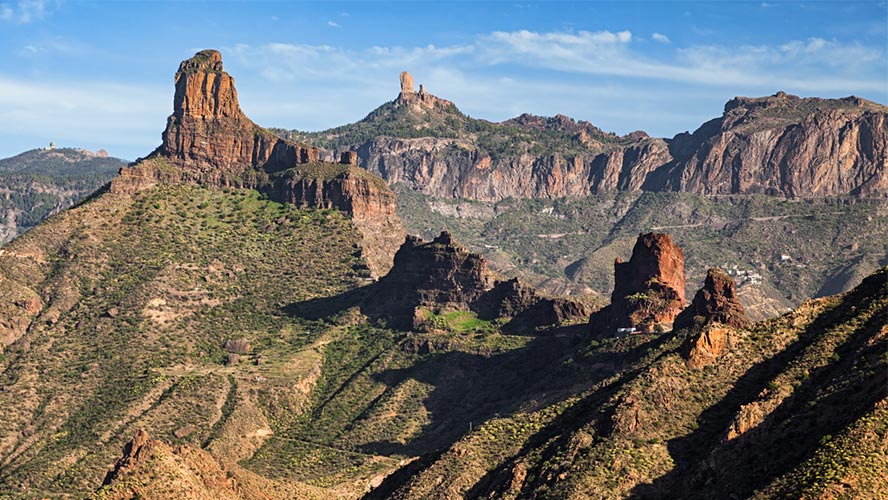
Roque Nublo. Gran Canaria.
Maspalomas dunes: a small desert
If you don’t have a photo of Maspalomas dunes, you haven’t been to Gran Canaria. This miniature Sahara desert is one of the most striking landscapes that must be visited on the island. Walk through the dunes, enjoy the panoramic views and round things up with a swim in the blue waters of the Atlantic.
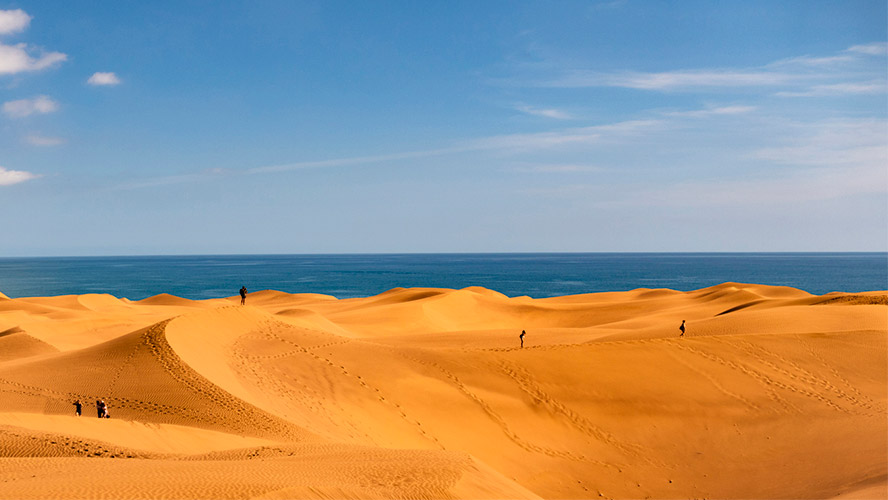
Maspalomas dunes. Gran Canaria.
Tamadaba Natural Park: inland and on the coast
Tamadaba Natural Park is a natural area that extends from the interior of Gran Canaria all the way to the ocean, featuring a Canary Island pine forest, sea cliffs and ravines. Explore this park spanning 7,500 hectares along one of its trails and don’t miss the beauty that unfolds before visitors at observatories such as the Balcón viewpoint.
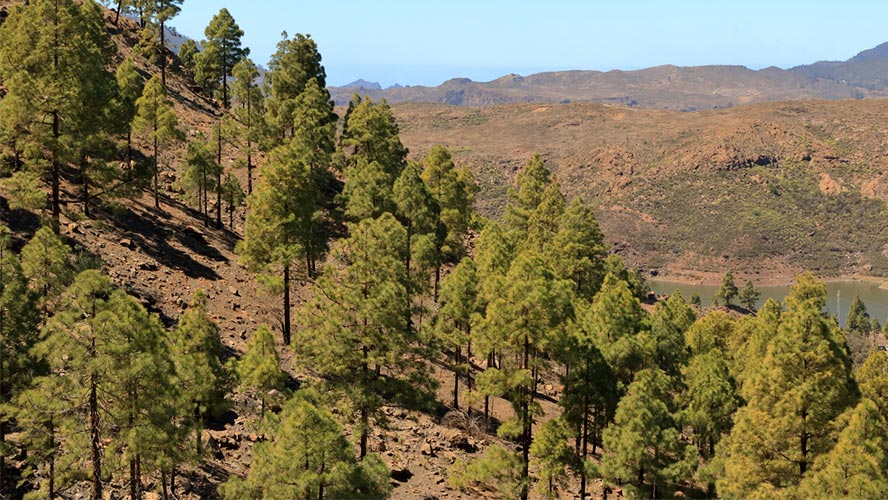
Tamadaba Natural Park. Gran Canaria.
Guayadeque Ravine Natural Monument
The Guayadeque ravine is not one of the best known places in Gran Canaria but nevertheless comes highly recommended. This ravine with steep slopes winds its way from the interior to the coastline for 15 kilometres. Along the way you will discover part of Gran Canaria’s indigenous past, cave houses, endemic vegetation (over 80 native species) and even hotels and restaurants.
It also boasts dozens of hiking routes that allow you to discover its most hidden secrets, so put on your hiking boots and get walking!
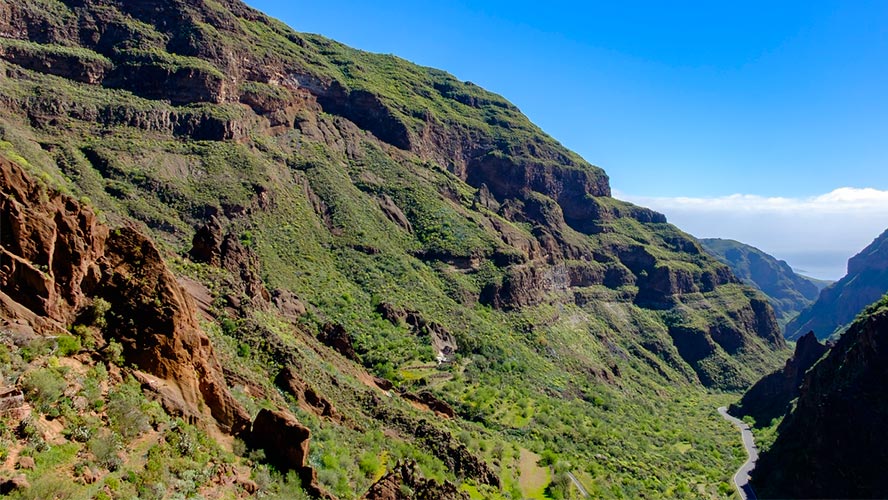
Guayadeque Ravine Natural Monument
Cenobio de Valerón
Situated on Gallego mountain, over 300 different-sized cavities form Cenobio de Valerón, which was created by Canarian indigenous people to store their harvests, protecting them from animals, storms and the light-fingered. The site was declared a Cultural Interest Site in 1974 and is one of the most unusual places that you cannot miss in the Canary Islands.
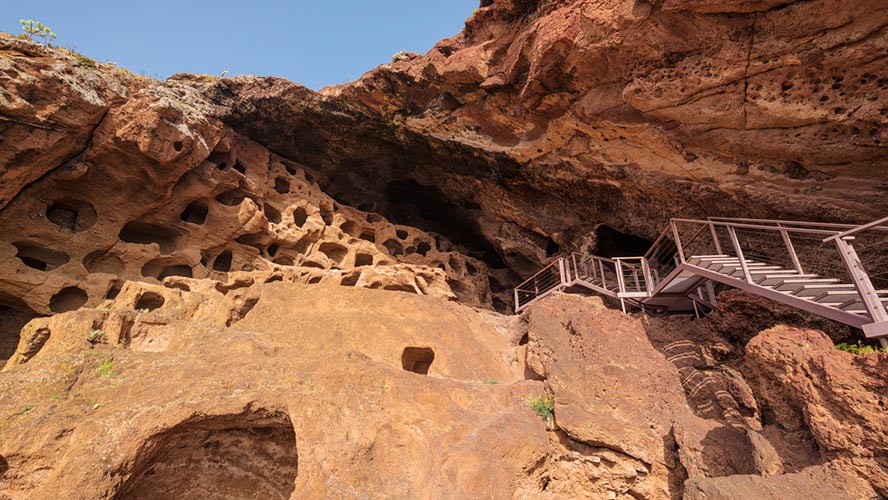
Cenobio de Valerón. Gran Canaria.
Bandama caldera
TheBandama caldera is one of the most astonishing and unusual places on the planet, formed after an eruption and the subsequent collapse of a volcano over its magma chamber. In 1994 the area was given protected status as a National Monument. The large crater is practically circular in shape with a circumference measuring three kilometres and a depth of 200 metres. We recommend climbing up to the caldera’s highest point, Bandama, as the views from up high are stunning.
Incidentally, its name comes from Daniel Van Damme, the Belgian who purchased the caldera in order to plant vineyards.
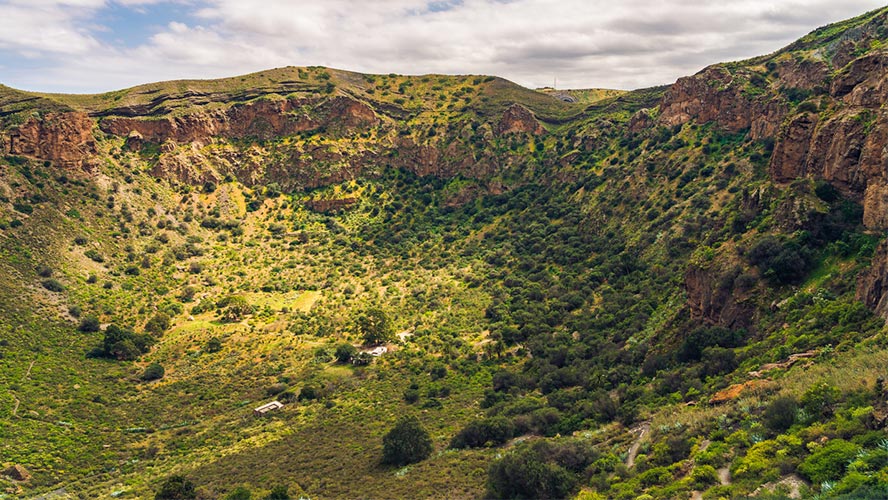
Caldera de Bandama. Gran Canaria.
Gáldar Painted Cave: testimony to indigenous peoples
The Gáldar Painted Caveis one of Gran Canaria’s archaeological jewels and living testimony to the indigenous people’s use of caves and lava tubes. Some 60 dwellings have been found in the acropolis of Gáldar, which could have housed over 200 people, in addition to other cavities that were used as burial chambers and meeting places. In the case of the Painted Cave, discovered in the nineteenth century, corpses and household items were found inside it. After large-scale adjustments, the Cueva Pintada Museum and Archaeological Park was set up. Guided tours are now available.
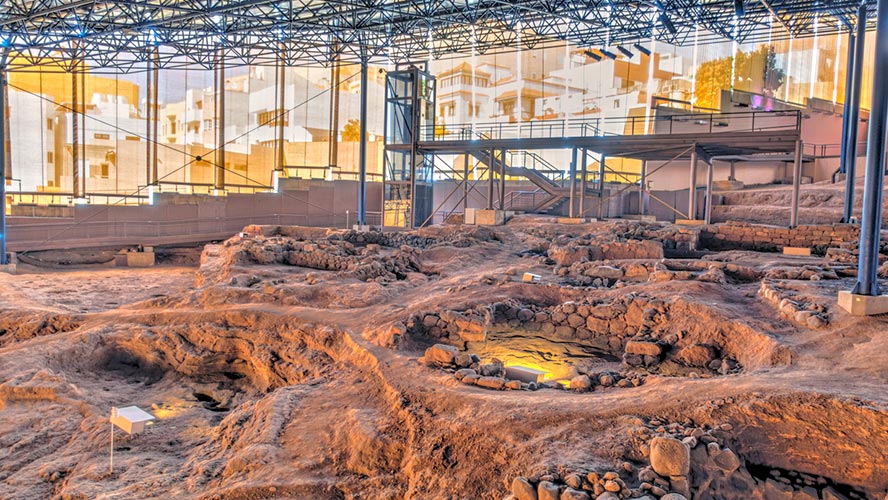
Gáldar Painted Cave. Gran Canaria.
Text taken from: https://www.barcelo.com



